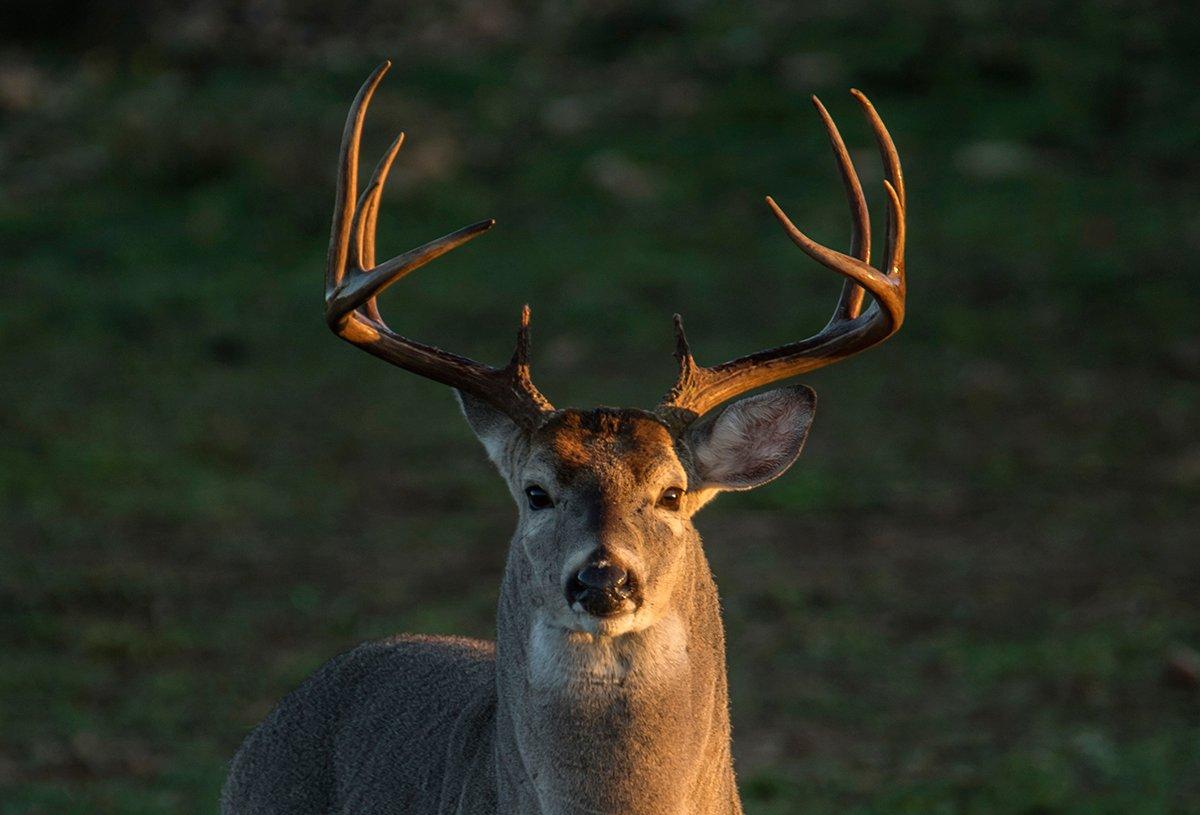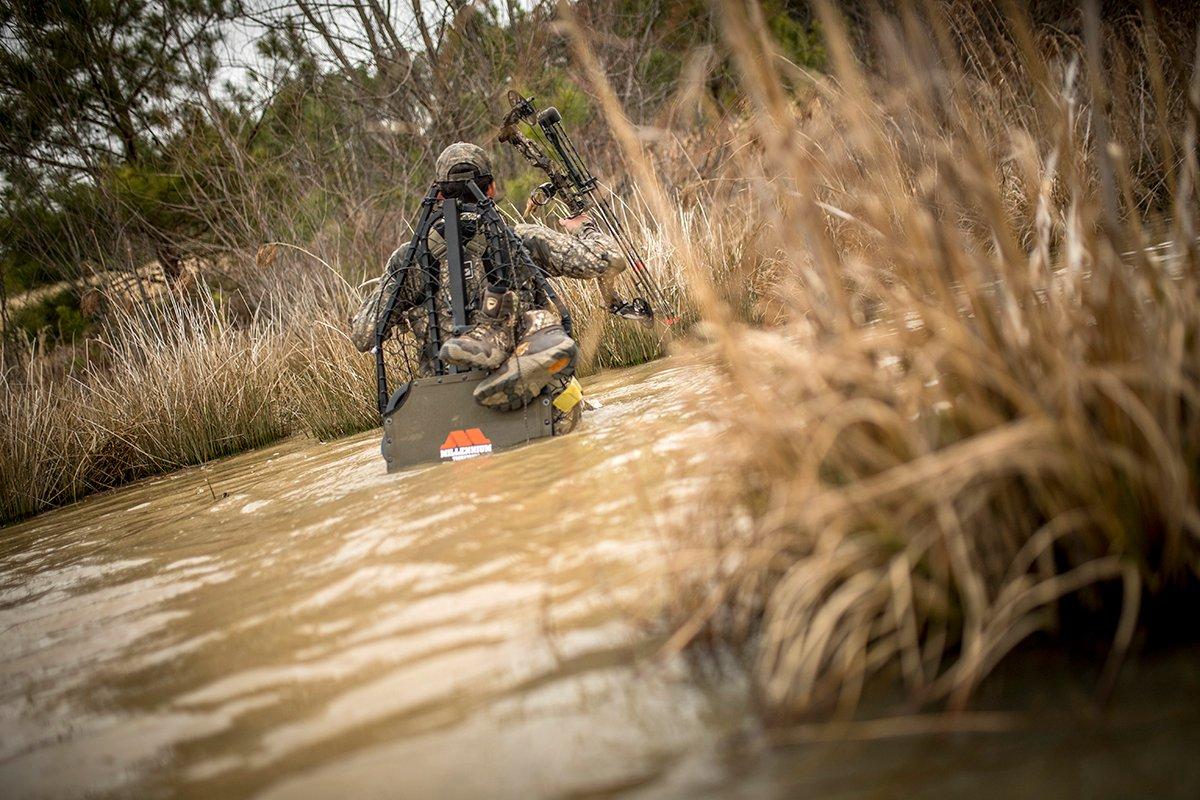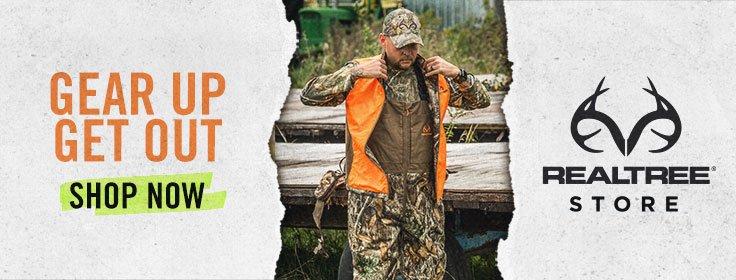A complete game plan to defend, deflect, and protect your hunting honey hole from others (and yourself)
Hunter numbers are declining everywhere, so they say. But private land lease prices are skyrocketing, land sales prices are soaring, and public lands are busting at the seams with people. It's never been more important to protect the hunting spots you do have. Here are some things to do, and perhaps some ideas to scratch off the list.
Hide in Plain Public Sight
I once heard of a man (we'll call him Mr. A) who hunted public land. He knew of a record-class whitetail that called home to a big tract of public land, but he wasn't alone. Others knew about that buck, too. And so, Mr. A pushed all his chips to the middle, figuratively and literally.
He kicked off his plan by scouting and found where the buck was likely bedding near the middle of the property. Hoping to distract other hunters, Mr. A created massive mock scrapes close to roadways, parking lots, access routes, and other areas well away from the buck's supposed core area. In fact, he created these scrapes complete with broken licking branches, and he placed deer tracks. He even tossed out some recruited deer droppings.
For added insurance, Mr. A proceeded to lay down excessive boot tracks in the directions he generally hunted the deer, making it look as if hordes of hunters were hunting in those directions.
His plan worked. A local regular (we'll call him Mr. B) took the bait. But the giant buck took interest in all that new sign as well. Within weeks, and much to Mr. A's surprise, Mr. B killed it.
I don't recommend Mr. A's plan, because it's deceitful and wrong. But another problem with it is that on shared land, private or public, hunting activity attracts other hunters. And good hunters with a little local notoriety certainly attract other hunters. The mentality is simple — that good hunter is there because a big buck is around. But rather than attempting to trick others, consider entering stealth mode so your presence goes unknown.
There are several ways to do this. Instead of parking in obvious spots, consider parking the vehicle in a discreet location well away from the chosen hunting area, even if that means a longer walk. Also, rather than a flashy ride that grabs attention, drive something that's under the radar. This will turn fewer heads. After leaving the vehicle, drag a limb to cover your nearby tracks.
Next, where legal, use either a mechanical or electric bike. These are less noticeable and don't leave behind boot tracks. If water access is available, boats are even more undetectable, and a great way to stay off a whitetail's radar, same as other hunters. Just remember to beach the boat in an area where it's less noticeable.
Getting down to nuts and bolts, don't hang treestands in obvious view of access routes and traveled paths. If the area permits brush trimming, take as little as possible. Where allowed, safely add additional cover around treestands. And for the ultimate stealth, conduct hang-and-hunt missions rather than leaving stands out.
Those who opt to use low-impact approaches have several options. The first and most popular is a climbing stand. These are portable, somewhat lightweight, and very comfortable. The downsides include larger profiles, limited tree compatibility (straighter trees are needed), and increased noise when walking through cover.
Another solid choice is a lightweight hang-on stand with sticks. For lighter weights, choose a treestand that's under 10 or 11 pounds. Once sticks are added, you'll be around the same weight as a climber. This setup type gives you more flexibility in tree selection. However, it takes more energy to hang and climb up into. Fortunately, you can pull the bottom steps when you leave to prevent others from using it.
A third and more recent market adoption is the tree saddle. It's a very small, lightweight setup with a minimized platform to stand on, paired with sticks used for climbing up and down. While in the tree, a saddle harness and foot platform are used to retain a resting standing position. Obviously, this setup produces less weight to carry afield, but it isn't as comfortable, and the learning curve can take some time.
(Don't Miss: You've Got Hogs on Your Place. Now What?)
Beware of Private Land Problems
Private land hunters aren't immune to issues, either. It's seared into my brain — that bright-red truck rolling down the fence line honking its horn as deer scatter like a busted covey of cagey quail. I wasn't close to the line, mind you. My treestand was about 75 yards from it, facing away from their land, but they still didn't like it one bit. (All while their tower blind sat 50 yards from the line facing toward us.) And the odds that he didn't see my blaze orange through the thin strip of timber are quite low.
Of course, finding my treestand sabotaged with loosened straps and stolen trail cameras didn't help my view of things, either. I just couldn't figure it out — what provoked all of this? Other than the fact that we'd started hunting a property that went un-hunted for years, I couldn't think of anything.
Regardless of how well you know someone, keep your mouth shut about big deer. I never encourage lying, but it isn't necessary to tell everything we know.
Nonetheless, it didn't change reality. We continued to have negative encounters until I called in the conservation officer. A long, and much-needed discussion took place, and fortunately, there haven't been any issues since. Sometimes, people just need a chance to talk things through. Officials can help facilitate that in a safe manner.
Obviously, those who have sole access to the land have additional measures to take, especially if experiencing negative encounters. But before that, talk to your neighbors. Establishing good, trustworthy relationships with them is beneficial on numerous fronts. Even if you don't achieve that, at least you know where they stand, what to expect from them, and how to handle them.
Regardless of how well you know someone, keep your mouth shut about big deer. I never encourage lying, but it isn't necessary to tell everything we know. Closed mouths and open ears go a long way.
If neighboring hunters and landowners become a problem, there are additional tactics to deter trespassing. First, install fencing that's difficult to cross, such as tight, five-strand barbed wire. Put up locked gates with coded or keyed access at all entrances.
Furthermore, create screening cover along property lines, roadways, and other spots that offer viewing into the property. This can be done by hinge-cutting trees or planting bottom-up conifer trees, such as spruce or white cedars, or a tall-growing plant such as giant miscanthus. These act as a visual shield and provide security for deer.
When establishing access routes, do it in a manner that doesn't draw attention from roadways and property lines. Then, rather than cutting straight paths, make them in a winding fashion so they aren't easy to identify.
Then, once everything is in place, clearly post property lines with paint, no trespassing signs, or both. Patrol your property regularly, while being careful not to pressure deer. It also doesn't hurt to hunt close to property lines from time to time, but do it in a manner that's respectful to neighbors. Treat them well, even if they don't do the same for you.
If needed, add motion lights and cellular trail cameras, such as the Spartan Go Cam, Spartan Ghost, or Spartan GoLive. These can serve as scouting tools, security cameras, or both.
Lastly, get to know local game wardens. They're friends and can help with neighbors if they become a problem.
(Don't Miss: Off-Season Game Plans for This Fall's Bucks)
Make Your Place the Best
In a perfect world, neighboring landowners work together in co-ops. Rather than attempting to make one property better than all the rest, they work together. Competition becomes partnership. This is a win for deer and deer hunters, and should be a goal of every landowner and manager.
In the real world, that scenario doesn't always exist, and folks who own and manage land not only have to protect it from competing hunters, but from the efforts of neighboring landowners, too. Land management is all about offering deer what they need, and if nearby properties do that better, deer might leave your place. Your property must be attractive in every way.
Begin by gauging the surrounding hunting pressure. Then, ensure yours is less. At least, ensure your hunting has less felt pressure, even if it receives more days of hunting. Accomplish this by establishing good entry routes, better exit paths, quality stand locations, and low-pressure hunting tactics.
Aerial maps and observations in the field can tell you a lot about what a neighbor is and isn't doing on their land (never trespass). Do what you can to create better bedding cover, provide more and better food, supply strategic water sources, and designate sanctuaries. Designing these things in specific locations can make land more huntable.
(Don't Miss: Maintenance Tips for Food Plot Equipment)
Protecting It from Yourself
Sometimes we're our own greatest enemies. This is true in many ways, including on hunting land. As mentioned, design habitat strategies and hunting plans so minimal pressure is applied. Treestand and blind locations are part of that, but access is equally important.
It's good to scout more and hunt less, especially when attempting to surgically remove a mature buck from the landscape. Precision is everything, and that doesn't come without scouting intel. Use low-impact scouting methods to learn the habits of target bucks.
High-impact scouting efforts to avoid, in most cases, include checking cameras too frequently, checking them improperly, scouting on foot more than is necessary, using bad access routes, disregarding wind directions, hunting on low-odds days, and hunting the best spots too soon. Instead, stay off the property as much as possible. Focus on precision hunting, rather than hunting a lot with little scouting intel.
For example, always hunt your way into the property when you don't have that necessary info. Start by hunting observation treestand locations to learn more about your target buck. Continue to push deeper into the property as you learn more about the deer's core area, and how it uses it. Then, with ample information in hand, move into the location you know is the X, or the spot where you'll intercept that buck. This is the lowest impact approach and following it will protect land from too much pressure.
All things considered, if hunters respect the resource, other hunters, and even themselves, all our hunting spots would improve. When we start working together, everyone wins, hunters and wildlife alike. Let's aim for that this year.
(Don't Miss: How to Build a Buck Bedding Area)














